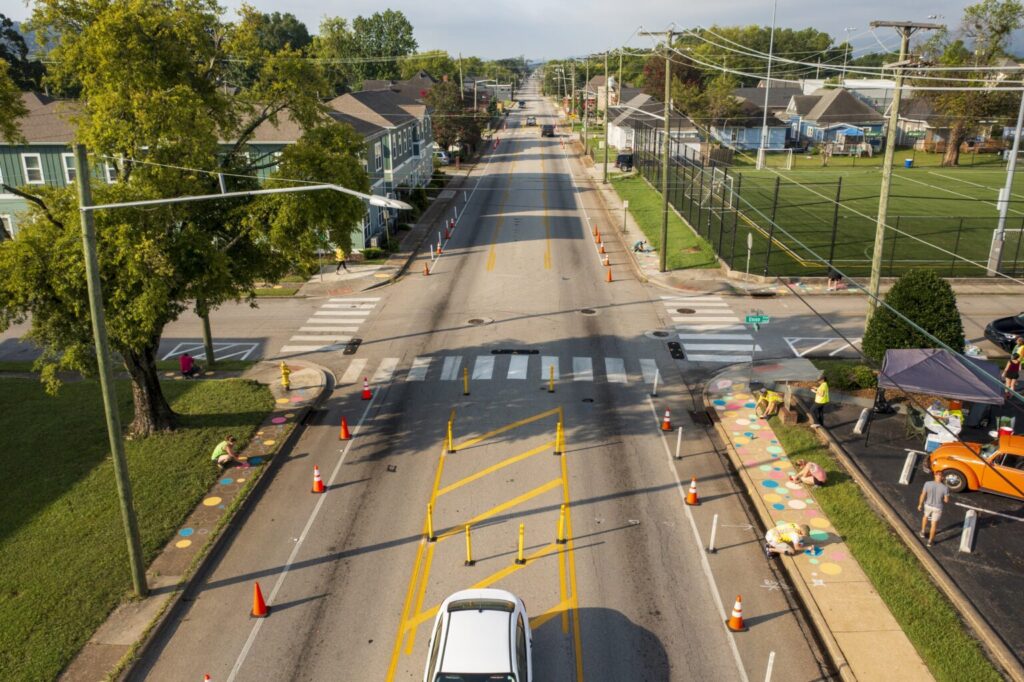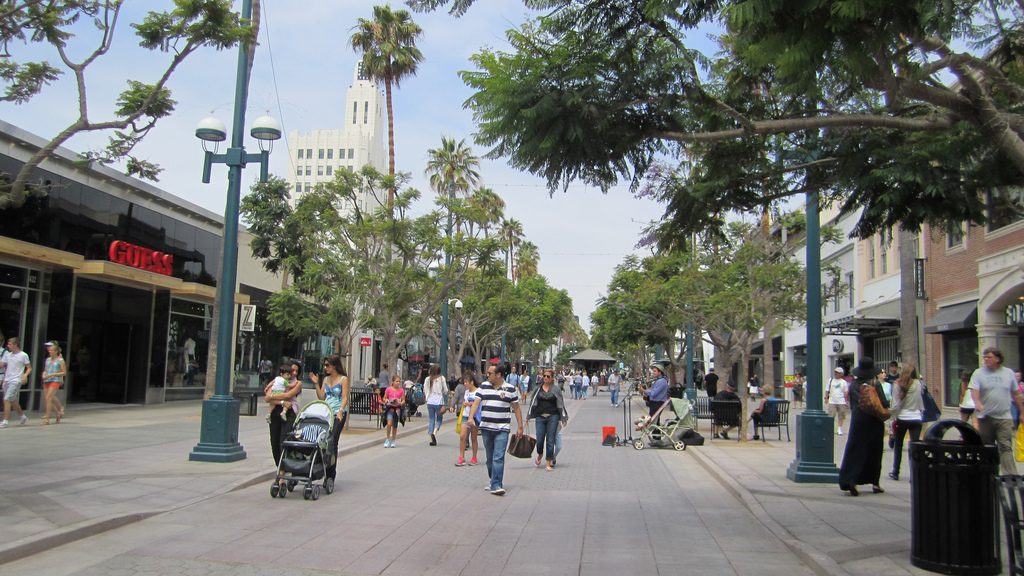
Angry that speed is prioritized over safety? Here’s what to do about it

Last week was #SafetyOverSpeed week here at Transportation for America, where we took a deep dive on our second principle for transportation policy: design for safety over speed. We spent the week discussing how prioritizing speed makes it almost impossible for most Americans to reach destinations anyway other than driving. Now we need to do something about it. Heidi Simon, the Deputy Director of America Walks, discusses how you can make a difference in your community.

LA’s ever-increasing walkability.
America Walks was disappointed—but not surprised—to learn that 6,283 friends, family members, and neighbors lost their lives while walking in 2018. As a national non-profit working to create safe, accessible, and enjoyable places to walk and move, we know all too well the immense challenge that this nation faces in addressing the devastating trend of growing fatalities among people walking and biking.
Our lack of surprise? Well, that’s because—despite a plethora of street design tactics proven to increase safety—we’re operating in a transportation system that prioritizes cars over people, and has for decades.
We know that many of the issues that plague people walking (and biking) are not new. Poor street design, improper speeds, and a culture that prioritizes cars over people have created a landscape that continues to unnecessarily endanger the most vulnerable users of the public rights of way.
Yet too often the conversation on making roads safer focuses on things that have little to no actual influence on improving safety. The distraction of the distracted walking narrative, the false notion that wearing reflective clothing will save lives, and the idea that these deaths are inevitable are all narratives that do a disservice to improving safety.
Perhaps the biggest issue is that the urgency to reduce the number of people killed while walking and biking occurs only periodically throughout the year, like when NHTSA released 2018 fatality numbers. By then, it’s too late to help those who have unnecessarily lost their lives while doing the most basic of human activities.
But it’s not too late to do something for those who are walking and biking on our streets right now. We can use data to target high crash corridors and improve spaces for our most vulnerable road users. We can make it clear that the only acceptable number of deaths on our streets is zero. And we can start today to do the work needed to make walking and biking safe for all users:
Use your voice: Tell decision-makers at all levels that funding for active transportation needs to be increased and that we need to take steps to improve safety through reduced speeds, improved road design, and policies that actually address safety concerns. This can be done at town halls, by visiting their offices, or inviting them to take a walk with you, your walking club, a walking school bus, or a main street business council. (One way you can help right now is by supporting a long-awaited federal Complete Streets bill.)
Use your head: Dive into the data related to pedestrian fatalities and use it to inform your advocacy. Learn more about the issue, stay vigilant to distractions like victim-blaming, and don’t let the issue disappear from the public debate.
Use your feet: Get out and do a walking audit with friends, neighbors, and your local elected officials to show them what’s being done well and not so well on the streets in your community. Never done one before? Check out our guide here with helpful quick tips like:
- Inviting people from a variety of background, professions, ages, and abilities.
- Don’t be afraid to knock on doors to get the word out about the event.
- Build relationships with decision-makers and local elected officials early so they’re more likely to be engaged during and after the audit.
Missed Transportation for America’s Safety over Speed blog posts? Check them out.



